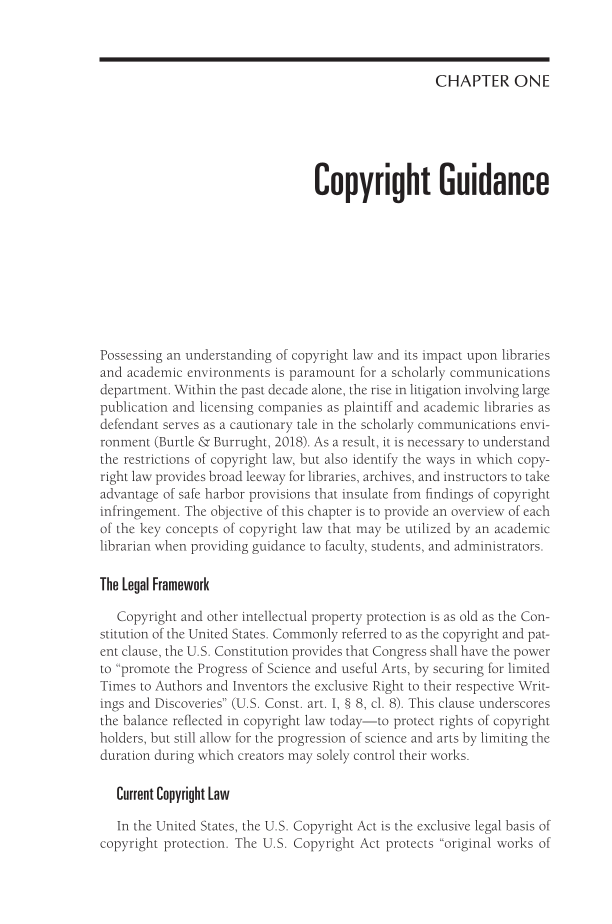CHAPTER ONE Copyright Guidance Possessing an understanding of copyright law and its impact upon libraries and academic environments is paramount for a scholarly communications department. Within the past decade alone, the rise in litigation involving large publication and licensing companies as plaintiff and academic libraries as defendant serves as a cautionary tale in the scholarly communications envi- ronment (Burtle & Burrught, 2018). As a result, it is necessary to understand the restrictions of copyright law, but also identify the ways in which copy- right law provides broad leeway for libraries, archives, and instructors to take advantage of safe harbor provisions that insulate from findings of copyright infringement. The objective of this chapter is to provide an overview of each of the key concepts of copyright law that may be utilized by an academic librarian when providing guidance to faculty, students, and administrators. The Legal Framework Copyright and other intellectual property protection is as old as the Con- stitution of the United States. Commonly referred to as the copyright and pat- ent clause, the U.S. Constitution provides that Congress shall have the power to “promote the Progress of Science and useful Arts, by securing for limited Times to Authors and Inventors the exclusive Right to their respective Writ- ings and Discoveries” (U.S. Const. art. I, § 8, cl. 8). This clause underscores the balance reflected in copyright law today—to protect rights of copyright holders, but still allow for the progression of science and arts by limiting the duration during which creators may solely control their works. Current Copyright Law In the United States, the U.S. Copyright Act is the exclusive legal basis of copyright protection. The U.S. Copyright Act protects “original works of
Document Details My Account Print multiple pages
Print
You have printed 0 times in the last 24 hours.
Your print count will reset on at .
You may print 0 more time(s) before then.
You may print a maximum of 0 pages at a time.





















































































































































































